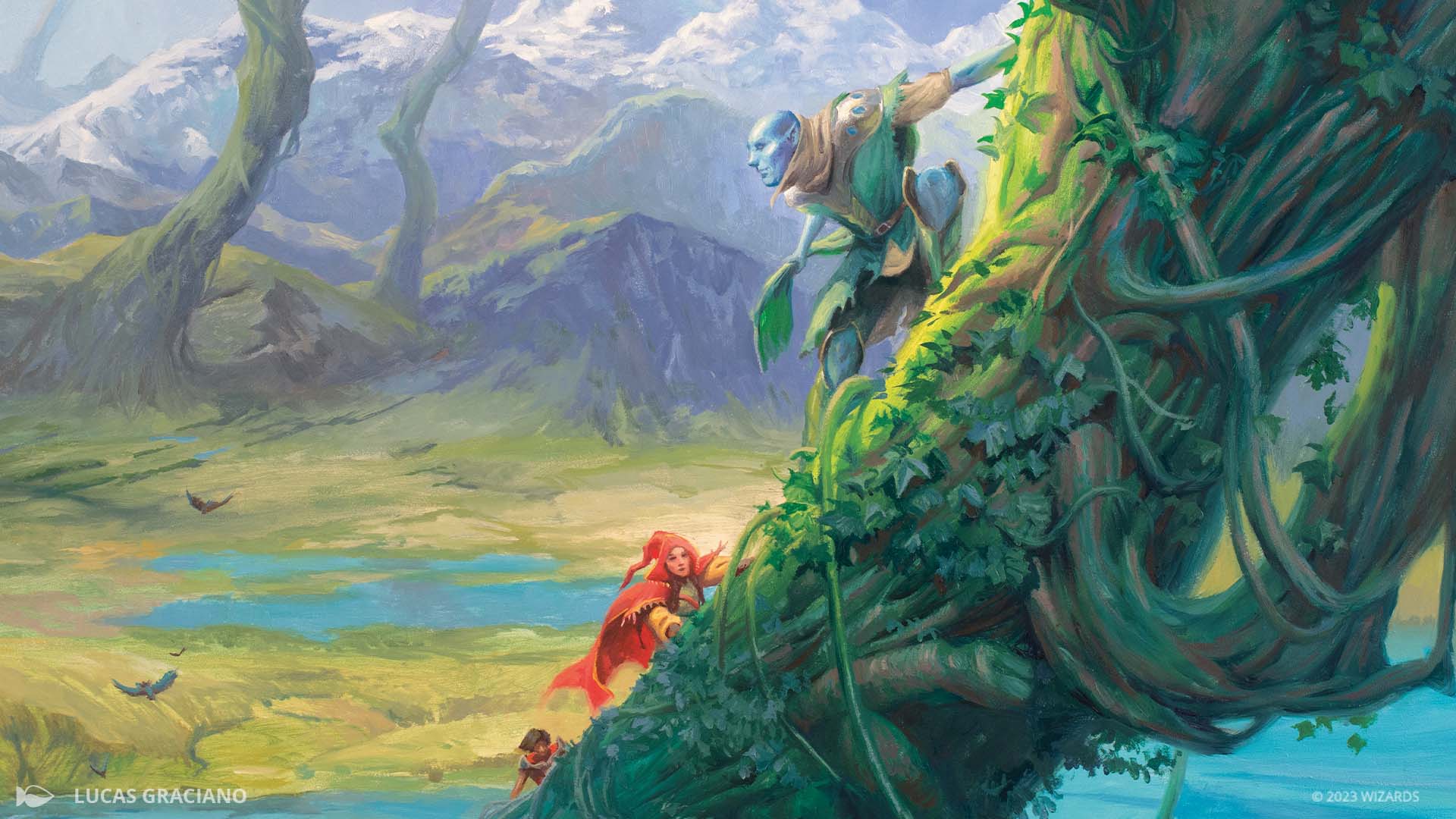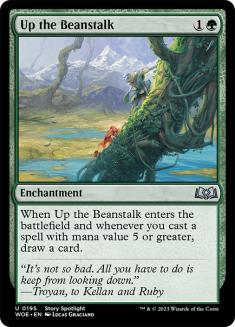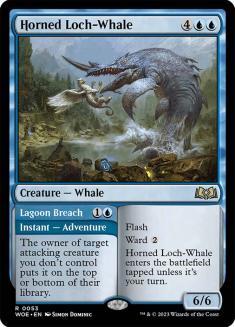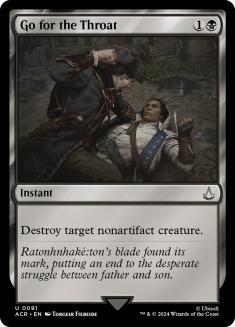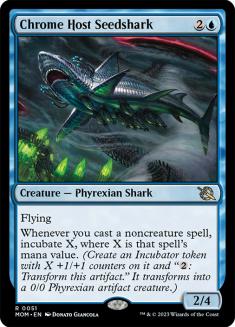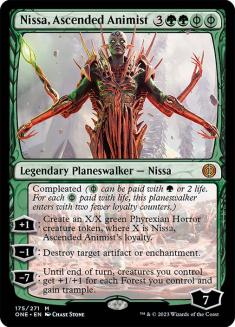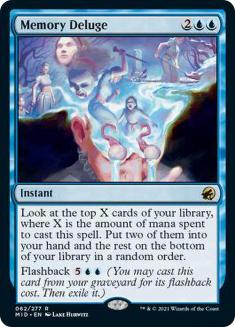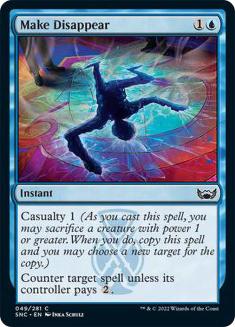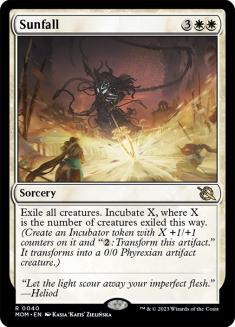Hey everyone, Corey Baumeister here to talk to you about where the Standard metagame is and how it has changed from the World Championship a few weeks ago. I’ll also be diving into some ways to upgrade my favorite deck in Standard, Bant Control!
The World Championship
First, we need to start with World Championship XXIX: a tournament with 110 players, all testing for weeks and dreaming of being the World Champion and $100,000 richer at the end of the weekend. After the prep was over and the dust settled, this was the metagame of this prestigious event:
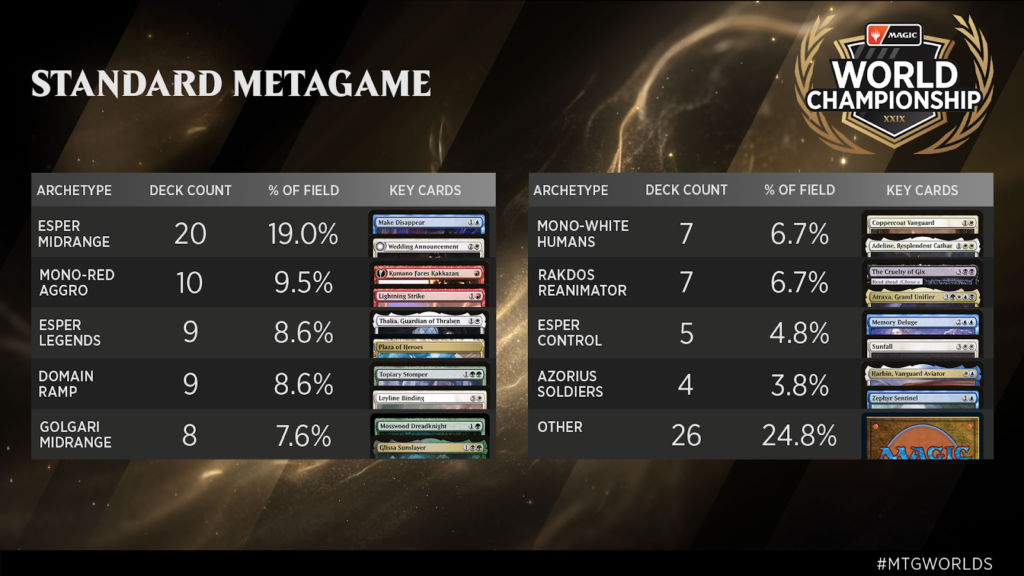
Esper was for sure the deck to beat going into the event, and most players (including myself) expected Esper Midrange to be the most-played deck. One deck you will not see on the graphic is the deck I’ll be talking about, Bant Control.
Creatures (3)
Planeswalkers (4)
Lands (27)
Spells (26)

This was the list Greg Orange and Greg Orange alone decided to play all the way to a Top 8 finish, losing to the future World Champion Jean-Emmanuel Depraz on Esper Legends.
Beanstalk Banter
Now, why didn’t more people play this deck at the tournament, and why did Greg decide to play Bant instead of something a bit more popular like Esper Control, which was piloted by five players at the World Championship?
A few reasons, but one card in particular stood out to me.
It’s all about those beans! This card is the real deal. Not just in Standard but in every single format, this card is making a huge impact. The ability to have a card replace itself and gain a ton of advantage in the late-game really is a welcome sight to any control gamers.
The Greg Orange Special
Speaking of control gamers, the other big reason Greg decided to play a deck containing blue and white cards is because that is the only deck Greg Orange plays. Right away, I looked at this deck with my usual skepticism, thinking to myself, “Yep, that’s definitely a Greg Orange deck!” But, after I started watching his games and trying the deck out for myself, I soon began to realize this is a really special deck. We normal folks might win with this deck as well, and not just the stone-cold control masters.
Greg was asked at some point during the event, “What don’t you want to play against?” His answer was, “Anything aggressive.” Now, this is usually the case for a lot of control mages out there. You want to play against a ton of midrange, as you make your opponent’s removal as close to dead as it can be for Game 1. You should have a pretty easy first game, and then post-sideboard you get to adjust to what you expect your opponent is going to sideboard against you.
Metagame Mini-Shift
On the other hand, when you play against hyper-aggressive decks like Mono-Red Aggro and Azorius Soldiers, that ability to play a long game and maximize your counterspells and card draw effects like Up The Beanstalk becomes a lot harder. Now, the good news moving forward in a post-World Championship metagame is that those decks are not as represented as they were at the event, as the win rate for both aggressive decks was quite low.
Now events are starting to look like this:

We have a bunch of Esper and Domain Control as the most popular strategies because they are just good against the field and they have game against everything. That is great news for us, as Bant Control is very good against midrange and big over-the-top decks like Domain.
Adapting Bant Control
So, after seeing this mini-shift, I decided to put some work into this really awesome Bant Control deck. Check it out!
Planeswalkers (7)
Lands (27)
Spells (26)

Now, the first thing you have to realize in going from Greg’s deck to my version is that Greg was playing a small-field, open-decklist tournament, and things just look differently in that environment compared to the usual closed-decklist events. One-of cards are more prominent because your opponent might play around them, even when you don’t actually have them. Dissipate, Negate, Brokers Charm, The Eternal Wanderer, and Hullbreaker Horror all fit into that mould of cards that Greg’s opponents will be thinking about as they sideboard and as they go to cast big spells in the match.
Now, getting ready for a closed-decklist event, we get to change a lot to make our deck more streamlined and powerful, since we will not have the advantage of “tricking” our opponents into sideboarding the way we want them to.
Loch-Whale Lockout
The first big change I want to address is the elephant in the room, or more accurately, the whale! I cut Horned Loch-Whale because I was just not playing against aggressive decks as often as before Worlds. Even against the aggressive decks, it was hard for me to think that Horned Loch-Whale was a better option than something like Sunfall #4. It was just okay for me.
Sure, you can cast it early to hold off some creatures as well as trigger Up the Beanstalk in the late-game. The problem is that this big late-game card that is supposed to start taking over the game dies to Go for the Throat, which is a very popular removal spell right now. Also, with this deck being out for a while, players have been leaving in some numbers of Go for the Throat against me in anticipation of Chrome Host Seedshark out of the sideboard. All those factors led me to just want to cut the medium Loch-Whale from my deck entirely.
Locking In a Replacement
What possible replacement, then, was good against the metagame? Nissa, Ascended Animist impressed me all weekend as I commentated on the World Championship. Not only does Nissa laugh at Go for the Throat, it also has some nice applications blowing up problematic artifacts and enchantments. The most-used mode is the +1 to make tokens, of course.
Nissa is at a great spot in the metagame as the only real answer that deals with it cleanly is Leyline Binding. Now, that is a good answer, but you will still have a large creature that gets to stay around, and if you ever Leyline Binding their Binding, then you get a seven-loyalty planeswalker, and that could be a huge upgrade if you got this planeswalker out for a discounted rate by paying two life once or twice.
I also liked The Eternal Wanderer in the Horned Loch-Whale spot, as it can get you out of some tough situations. It’s not my favorite card right now, but I thought three copies of Nissa was a bit excessive, so I wanted some planeswalker diversity.
Tap-Out Shift
With our deck a bit bigger and more tap-put control, I wanted to try out one of my favorite cards in Standard, The Celestus! This card has been bonkers for me. We still largely play the game on our opponent’s turn, so if you can set up a turn where you cast The Celestus on Turn 4 and have Make Disappear or disruption available, you can really start taking over the game by sculpting your hand. Sculpting your hand is important in this deck if you do not have Up the Beanstalk in your hand or on the battlefield. This deck looks much different when you have that card on Turn 2 versus not finding the powerful enchantment. Any card to try to find Up the Beanstalk is a welcome sight.
I also upgraded to the full four copies of Sunfall right away. Not only is this a great Sunfall deck, as we play zero creatures, but Sunfall is also just one of the best Wrath effects we have ever seen. Not having four of that card is the 75 just feels wrong to me.
Sideboard Switch
Normally I love having a transformational sideboard, where we add powerful creatures like Chrome Host Seedshark to the deck to get people off-guard if you think they are going to cut all of their removal. That has become pretty stock for Bant in almost every matchup, so I added Memory Deluge, which works well against Esper and Domain to just play a “draw-go” gameplan while still having something to do if your opponent doesn’t cast a spell that you think you have to counter.
That being said, I still will sideboard in Seedshark on the play or for Game 3 if I notice my opponent has cut a lot of removal. Shark is also still great against aggressive decks like Soldiers, as it has high toughness and it doesn’t die to Cut Down or Lightning Strike-type effects.
Timing Up the Beanstalk
Know when to cast Up the Beanstalk. If you are on the play and you have it for Turn 2, just cast it. I don’t think there is a single situation where I would not want to cast it if given the option.
But let’s say you are on the draw against Esper Midrange and they just play a second land and pass. What do you do? If you cast Up the Beanstalk into a Make Disappear, and then your opponent untaps and casts Wedding Announcement, you are in a world of trouble. So if you have a Make Disappear or some piece of interaction, consider waiting on casting your spell. You can find room to cast it on Turn 4, when you can either pay for Make Disappear or have disruption of your own after it resolves.
When I have two Up the Beanstalks, I like to be a bit more aggressive with my removal spells, such as casting Sunfall even though your opponent only has one decent creature, like a Raffine, Scheming Seer. The value you get from the Up the Beanstalk triggers is worth it, even if the Sunfall itself is not of such great value.
Patience Is a Virtue
Timing is everything with this deck. If you are hasty to resolve your biggest threat on your turn, it gets countered, and your opponent untaps and casts their big thing, you will lose those games a large percentage of the time. You want to be patient and use cards like The Wandering Emperor as bait on your opponent’s end step, and if they counter the bait,then drop a haymaker like Nissa, Ascended Animist. If they let it resolve and you have more stuff to cast on your opponent’s turn, like Leyline Binding or Memory Deluge, just do that. Get your opponent as off-balance as possible before you cast sorcery bombs.
Being patient is the last bit of advice, and the hardest to master. Few of us are anywhere near as skilled as Greg Orange at playing control decks, but if you watch him play, every turn I think he has an “obvious” target for a removal spell, he ends up waiting, and 99 times out of 100, it really pays off for him. Pick your spots carefully, and just picture you are walking on a tightrope: one wrong step and you are falling to your death.
After watching Greg pilot Bant Control all week, I came home from the event, and one thought was going through my head…

Be like Bill Foster, me, and Greg Orange, and think about those beans as you count your wins on your way to your next Top 8!
Thanks for reading!

